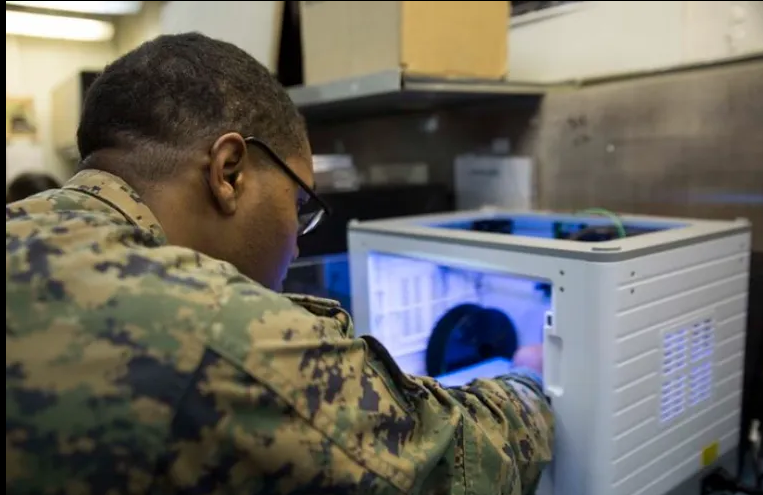Applications of 3D Printing in the Defense and Military Sectors

In recent years, 3D printing technology has been making waves across various industries, revolutionizing the way products are designed and manufactured.
The defense and military sectors are no exception to this innovation. With its versatility and unique capabilities, 3D printing is proving to be a game-changer, enhancing military operations and providing new opportunities for innovation.
In this article, we will explore the various applications of 3D printing in the defense and military sectors and how this cutting-edge technology is reshaping the landscape of modern warfare.
1. Introduction to 3D Printing in Defense and Military
Before diving into the specific applications, let's have a brief overview of 3D printing technology and how it works.
3D printing, also known as additive manufacturing, is a process in which three-dimensional objects are created by layering materials one on top of another.
The technology enables the production of complex and customized parts without the need for traditional manufacturing processes, such as machining or molding.
2. Rapid Prototyping and Design Iteration
One of the key advantages of 3D printing in the defense and military sectors is its ability to facilitate rapid prototyping.
In the past, creating prototypes of new equipment or parts could be time-consuming and costly.
With 3D printing, designers and engineers can quickly create physical models of their concepts, allowing for faster design iteration and refinement.
2.1. Advantages of Rapid Prototyping
- Accelerated development timelines
- Cost-effective testing and validation
- Easy integration of design changes
3. On-Demand Spare Parts
Maintaining a fleet of military equipment often involves the challenge of sourcing spare parts, especially for older or obsolete machinery.
3D printing offers a viable solution to this problem by enabling the on-demand production of spare parts, reducing the need for extensive inventories.
3.1. Improved Logistics
- Reduction in supply chain delays
- Mitigation of equipment downtime
- Lower inventory management costs
4. Customized Equipment and Personalization
Soldiers often require equipment tailored to their specific needs and preferences.
3D printing allows for the production of personalized gear and accessories, ensuring that each soldier is equipped with tools that enhance their effectiveness and comfort.
4.1. Enhancing Performance
- Optimal fit and ergonomics
- Tailored weaponry and accessories
- Improved overall combat readiness
5. Unmanned Aerial Vehicles (UAVs) and Drones
The military has embraced the use of UAVs and drones for surveillance and reconnaissance purposes.
3D printing has facilitated the rapid production of UAV components, making it easier to deploy these devices in various missions.
5.1. Advancements in Drone Technology
- Lighter and more durable materials
- Streamlined design for improved aerodynamics
- Integration of sophisticated electronics
6. 3D Printed Weapons and Munitions
While the topic of 3D printed weapons raises ethical and security concerns, it is essential to explore its potential applications.
Some military entities are researching the development of 3D printed weapons and munitions for specific use cases.
6.1. Advantages and Challenges
- Customizable weaponry for specialized operations
- Stricter regulations and control measures
7. Camouflage and Stealth Technology
In modern warfare, stealth and camouflage play crucial roles in gaining a tactical advantage.
3D printing allows for the creation of adaptive camouflage patterns and stealth-enhancing structures.
7.1. Augmented Camouflage Capabilities
- Improved integration with the environment
- Reduced detection by enemy sensors
- Enhanced protection for troops and equipment
8. Bioprinting for Medical Applications
Beyond traditional military equipment, 3D printing is also advancing medical capabilities on the battlefield.
Bioprinting holds the potential to revolutionize medical treatment and wound care for injured soldiers.
8.1. The Future of Medical Support
- 3D printed tissue and organ replacements
- On-site medical facilities with bioprinting capabilities
9. Construction of Military Infrastructure
In remote or disaster-stricken areas, setting up military infrastructure can be challenging.
3D printing can be deployed to construct temporary structures, bridges, and other essential facilities.
9.1. Rapid Deployment and Rebuilding
- Quick establishment of field bases
- Resilience in post-conflict reconstruction
10. Environmental Adaptability
The military often operates in diverse and harsh environments. 3D printing enables the creation of equipment and tools specifically designed to withstand extreme conditions.
10.1. Strengthening Military Capabilities
- Arctic and desert operations
- Underwater missions and equipment
11. Training and Simulation Aids
3D printing is not only useful for physical equipment but also for creating training aids and simulation models, allowing soldiers to undergo realistic and immersive training scenarios.
11.1. Real-Life Training Scenarios
- Cost-effective simulation models
- Enhanced skill development and preparedness
12. Cybersecurity and Encryption
The reliance on technology in modern military operations necessitates robust cybersecurity measures. 3D printing can contribute to the development of secure and encrypted communication systems.
12.1. Securing Data and Communication
- Additive manufacturing for tamper-resistant components
- Hardening against cyber threats
13. Collaboration and Research
Universities, research institutions, and defense agencies can collaborate on 3D printing research, sharing knowledge and advancements for mutual benefit.
13.1. Public-Private Partnerships
- Accelerating innovation through collaboration
- Leveraging expertise from various sectors
14. Ethical Considerations and Regulations
As with any emerging technology, 3D printing in the defense and military sectors raises ethical and regulatory concerns that must be carefully addressed.
14.1. Striking the Balance
- Ensuring responsible use of 3D printing technology
- International agreements and guidelines
15. Conclusion
In conclusion, 3D printing is reshaping the defense and military sectors, providing innovative solutions for various challenges.
From rapid prototyping to personalized equipment, and from bioprinting to infrastructure construction, the applications of 3D printing are vast and promising.












